UPSC Daily Current Affairs- December 18, 2021 PDF Download
GS-I
Supreme Court allows bullock cart races in Maharashtra
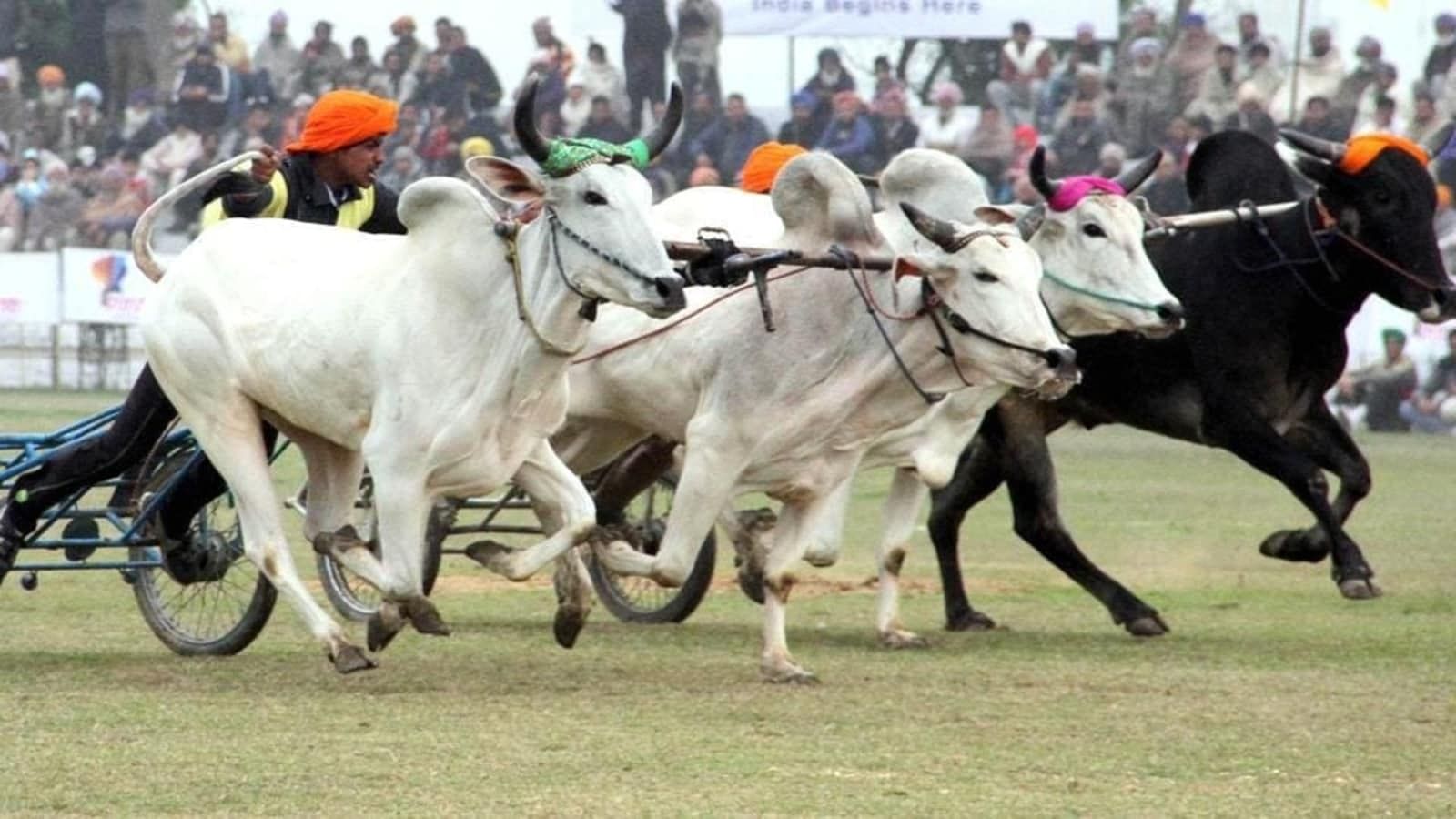
Context
- The Supreme Court has allowed Maharashtra to hold bullock cart races in the state till the pendency of the matter before the Constitutional Bench of the apex court.
Allowing bullock-cart races
- The SC observed that the validity of the amended provisions of the Prevention of Cruelty to Animals Act, 1960 and the rules framed by Maharashtra provided for bullock cart race in the State.
- Such races would operate during the pendency of the petitions as the entire matter has been referred to a constitution Bench.
- The state govt has cited examples as the same is being conducted in the states like Tamil Nadu and Karnataka.
Why was there a ban on the bullock cart races?
- Bullock cart races were banned in Maharashtra after the Supreme Court declared that the race as violative of the provisions of the central act in 2014.
- It then had observed that bulls were not anatomically designed to participate in races/taming and would be subjected to cruelty if used as a performing animal.
Why did the Maharashtra government go to SC?
- Even after this law, the Bombay High Court refused to vacate stay on the bullock cart races.
- Hence it got to approach the SC.
How did Maharashtra respond?
- In April 2017, the Maharashtra assembly had passed legislation for resumption of bullock cart races across the state.
- The Bill titled ‘The Prevention of Cruelty to Animals (Maharashtra Amendment) Bill’ was passed unanimously with the support of all parties.
- As per the amendment, bullock cart races could be held with the prior permission of the district collector concerned by ensuring that no pain or suffering would be caused to the animal.
Proving the running ability of a bull
- In November 2017, the Maharashtra government set up a committee to study the running capacity of various breeds of bulls and bullocks in comparison to horses.
- The committee was asked to study physiological and biochemical changes during the running of the bulls, bullocks and horses.
- A report titled ‘Running ability of bull’ was prepared in two months by the government to justify allowing the bullock cart races.
- Subsequently, the Maharashtra government challenged the Bombay HC’s order.
Veera Rani Abbakka Utsava
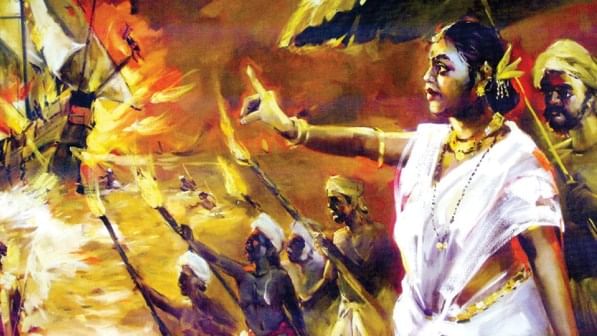
Context
- The silver jubilee of Veera Rani Abbakka Utsava will be celebrated on the premises of Ullal City Municipality on December 21.
About Veera Rani Abbakka Utsava
- Ullal Veera Rani Abbakka Utsava committee recently decided to present “Veera Rani Abbakka award” during Veera Rani Abbakka festival in December 2021.
- Veerarani Abbakka award will be given to the lady who has made substantial achievement in research and culture. Committee would also take mother,and, language and tradition into consideration for presenting the award.
- Award will be presented to a lady with Tulu background who has made substantial achievement in sports, arts, social service and other such sectors.
Who was Rani Abbakka Chowta?
- She was the first Tuluva Queen of Ullal. She fought the Portuguese in latter half of the 16th century.
- She belonged to the Chowta dynasty who ruled over parts of coastal Karnataka (Tulu Nadu), India.
- The port town of Ullal was their subsidiary capital. Ullal was strategically placed because of which, The Portuguese made several attempts to capture it. But the queen repulsed their attacks for over four decades.
- She came to be known as Abhaya Rani, because of her bravery.
Tamil Nadu brings in State Song
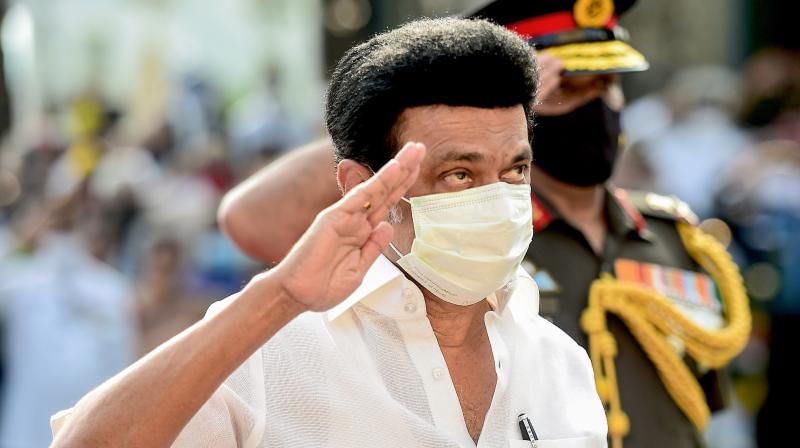
Context
- The Tamil Nadu Government has declared the Tamil Thai Vaazhthu as State Song.
- The decision came after the Madras High Court ruling that there is no statutory or executive order requiring the attendees to stand up when Tamil Thai Vaazhthu is sung.
About Tamil Thai Vaazhthu
- A part of the verses under the title ‘Tamil Dheiva Vanakkam’ from Manonmaniam, penned by Manonmaniam Sundaranar and published in 1891, eventually came to be known as the Tamil Thai Vaazhthu.
- In 1913, the annual report of the Karanthai Tamil Sangam made the demand for singing the song at all functions.
- The Tamil Thai Vaazhthu is being sung at Karanthai Tamil Sangam since 1914.
- It is also being sung at all Tamil Sangams associated with the Karanthai Tamil Sangam.
- The Karanthai Tamil Sangam had appealed to the then Chief Minister, C.N. Annadurai, to declare Tamil Thai Vaazhthu the State song.
What is the state directive?
- TN CM has issued a directive that everyone who is present during the rendition of the song, barring differently-abled persons, should remain standing.
- The song should compulsorily be sung at the beginning of events organized by all educational institutions, government offices and public sector undertakings, among other public organizations.
- The song should be sung in 55 seconds in Mullaipaani Ragam (Mohana Raagam) in the thisra thaalaa.
- At public functions, the playing of the song with musical instruments/recordings is to be avoided, and trained singers should sing it.
What was the Madras HC observation?
- There is no statutory or executive order requiring attendees to stand up when it was being sung.
- The court, however, ruled that Tamil Thai Vaazhthu “is a prayer song and not an Anthem”.
- While the “highest reverence and respect ought to be shown”, it was not necessary to stand for it.
- The song is sung at the commencement (and not at the end) of all functions organized by government departments, local bodies and educational institutions.
What about National Anthem?
- In the Bijoe Emmanuel vs. State of Kerala (1986) Case, the Supreme Court ordered the readmission to school of three children who had been expelled for refusing to sing the national anthem.
- It was then noted by the SC that there is no provision of law which obliges anyone to sing the National Anthem.
- Again, the Supreme Court had, in Shyam Narayan Chouksey v. Union of India (2017), directed that all cinema halls shall play the national anthem before the film and all present are obliged to stand.
Point of discussion: Is it a case of Sub-nationalism?
- There has been an intensification of sub-nationalism in India by highlighting the greatness of their state, language or historical state icons.
- This pride has, at times, led to unimaginable actions. The latest issue of contention was regarding a separate State flag for Karnataka.
- India also witnesses shocking developments showing the ugly face of provincialism in the North-East.
Issues with such tendencies
- Overambitious aspirations: As much as it is a matter of pride it remains a matter of concern when regional aspirations become too strong.
- Secessionist tendencies: India has already faced partition due to rising religious motives and has been plagued by secessionism in J&K and Nagaland based on regional identities.
- National Unity: It can be argued that subnationalism emphasizes aggressively on its regional identities then it can break the sensitive thread through which India remains a nation.
- Communalism: It should be critically studied that whether the state’s assertions are to freely exercise their own culture and language or to belittle and suppress others.
Affirmations to offer
- Pluralism: An optimistic view emerges which characterizes subnationalism as the strength of a multi-cultural nation such as India.
- Socio-economic solidarity: Subnationalism encourages social development as the level of solidarity is high in a state under such motives of state song, flag etc.
- Unification: State symbols means that a region becomes more and more homogenous and dedicated for welfare under cultural and linguistic symbolization.
Conclusion
- As long as subnationalism is not secessionist in nature or is aimed towards other communities, it might become a positive force in India.
- It will help in re-establishing the nature of the pluralistic society of India amidst the growing manufactured rhetoric of nationalism being falsely related exclusively with religious nationality.
GS-II
Order of the Druk Gyalpo
Context
- PM Narendra Modi was honoured with Bhutan’s highest civilian award “Order of the Druk Gyalpo”.
About Druk Gyalpo
- It was conferred with the award on the occasion of Bhutan’s National Day (December 17).
- It marks the crowning of Ugyen Wangchuck as the first Druk Gyalpo of modern Bhutan.
- He is the head of state of Bhutan. Bhutan is also known as Drukyul, in the Dzongkha language.
- It translates to “The Land of Thunder Dragon”. Kings of Bhutan are called Druk Gyalpo (Dragon King) while, Bhutanese people call themselves Drukpa (people of Druk).
How India’s data protection Bill compares with EU regulation

Context
- The Personal Data Protection Bill is in some aspects very similar with some differences to global standards such as European Union’s General Data Protection Regulation.
Major Similarities
- Data fiduciary
- EU: Data fiduciary is any natural or legal person, public authority, agency or body that determines purpose and means of data processing
- India: Similar suggestions; additionally, NGOs which also process data to be included as fiduciaries
- Breach
- EU: Supervisory authority must be notified of a breach within 72 hours of the leak so that users can take steps to protect information
- India: Data Protection Authority must be informed within 72 hours; DPA will decide whether users need to be informed and steps to be taken
- Consent
- EU: Users must have informed consent about the way their data is processed so that they can opt in or out.
- India: Processing of data should be done in a fair and transparent manner, while also ensuring privacy
- Transition period
- EU: Two-year transition period for provisions of GDPR to be put in place
- India: 24 months overall; 9 months for registration of data fiduciaries, 6 months for DPA to start
Differences
- Punishment
- EU: No jail terms. Fines up to 20 million euros, or in the case of an undertaking, up to 4 % of their total global turnover of the preceding fiscal year
- India: Jail term of up to 3 years, fine of Rs 2 lakh or both if de-identified data is re-identified by any person.
- Anonymous information
- EU: Principles of data protection do not apply to anonymous information since it is impossible to tell one from another
- India: Non-personal data must come under the ambit of data protection law such as non-personal data
Parvovirus
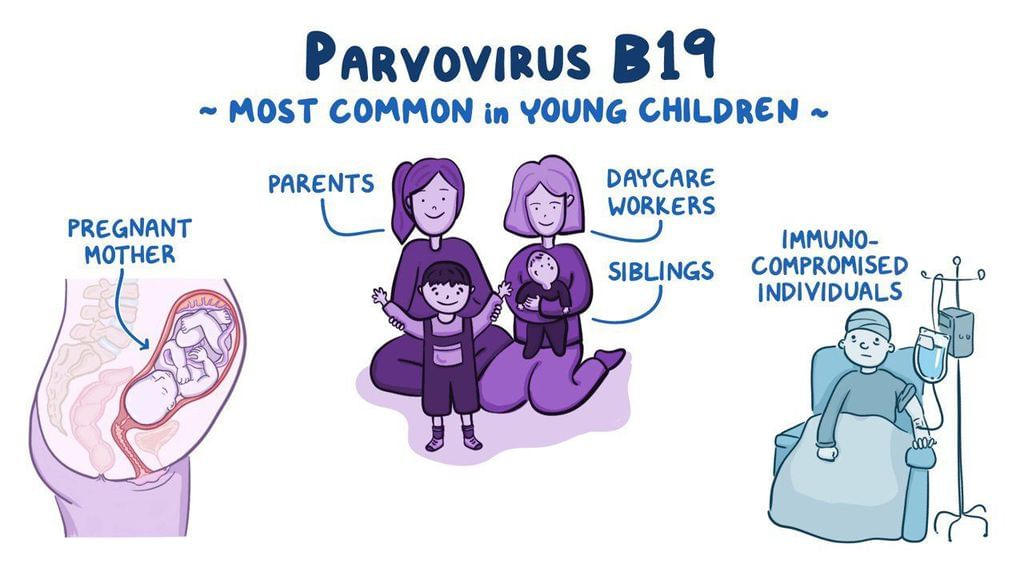
Context
- Nearly 2,000 pets and stray dogs in Amravati city were affected by canine parvovirus virus.
What is Parvovirus?
- About
- It is a highly contagious viral disease that can also be life-threatening in puppies and dogs.
- Parvovirus affects the intestinal tract of canines with puppies being more susceptible.
- Symptoms
- Bloody diarrhoea, vomiting, drastic weight loss, dehydration and lethargy are some of the symptoms. The virus has reported a 90 per cent mortality rate.
- The virus has reported a 90 per cent mortality rate.
- Transmission
- The highly contagious virus spreads through direct contact with an infected dog or by indirect contact with a contaminated object, including the hands and clothing of people who handle infected dogs.
- Treatment
- It has no cure and inoculating a puppy or a dog gives them a fighting chance against the infection.
GS-III
Govt brings Bill to amend Wildlife Protection Act
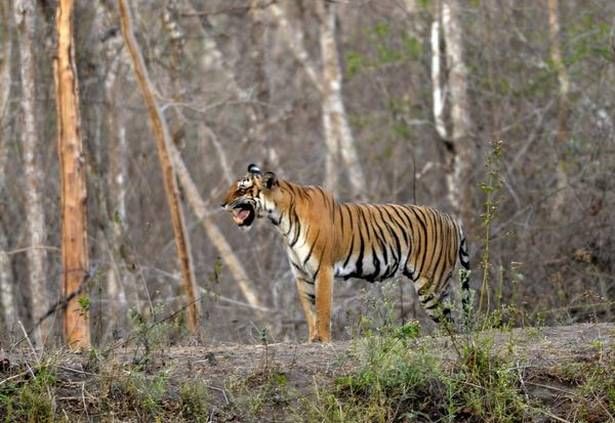
Context
- Forests Minister has introduced in Lok Sabha the Wildlife Protection (Amendment) Bill to ensure that the original 1972 Act complies with the requirements of the Convention on International Trade in Endangered Species of Wild Fauna and Flora (CITES).
What the Amendment brings in?
- Seized Species
- There is also the insertion of a new section 42A about surrender of wild animals and products.
- Any article or animal surrendered under this Section shall become property of the State Government and the provisions of Section 39 shall be applicable to it.
- Wildlife Management Plans
- The Ministry has mandated that Wildlife Management Plans which are developed for sanctuaries and national parks across the country, will now become a part of the WPA.
- They will have to be approved by the Chief Wildlife Warden of the state. This will ensure far stricter protection to these protected areas.
- Earlier they would be protected through executive orders which did not have as much teeth.
- Standing Committee of State Board for Wildlife
- The Bill proposes reducing the number of schedules and establishing a Standing Committee of State Board for Wildlife.
- These committees will function like the National Board for Wildlife which is responsible for monitoring protected areas in the country and awarding or denying permission to projects in light of its threat to wildlife.
- Officials say that in most states, State Wildlife Boards fall under the responsibility of Chief Ministers, and are therefore neglected due to the paucity of time.
- The state Standing Committees will be able to take decisions on wildlife management and permissions granted for projects, without having to refer most projects to the NBWL.
- Reducing number of Schedules
- The Ministry has also rationalized Schedules for Wildlife under the Act, bringing it down from 6 to 4 major schedules.
- A schedule is a categorization of wildlife depending on how critically endangered they are.
- A schedule I category of wildlife (such as Tigers) are the highest protected under the Act.
Need for the Amendment
- CITES aims to regulate the international trade of animals and plants so that it does not threaten their survival.
- This has been a long-standing demand from CITES for the past 25 years.
- India has been blacklisted by CITES once before, and if a second blacklisting were to happen — then India will no longer be able to trade in important plant specimens.
- This would affect the livelihood of a large section of Indian society that relies heavily on this trade.
About CITES
- CITES stands for the Convention on International Trade in Endangered Species of Wild Fauna and Flora.
- It is as an international agreement aimed at ensuring “that international trade in specimens of wild animals and plants does not threaten their survival”.
- It was drafted after a resolution was adopted at a meeting of the members of the International Union for Conservation of Nature (IUCN) in 1963.
- It entered into force on July 1, 1975, and now has 183 parties.
- The Convention is legally binding on the Parties in the sense that they are committed to implementing it; however, it does not take the place of national laws.
- India is a signatory to and has also ratified CITES convention in 1976.
CITES Appendices
- CITES works by subjecting international trade in specimens of selected species to certain controls.
- All import, export, re-exports and introduction from the sea of species covered by the convention has to be authorized through a licensing system.
- It has three appendices
- Appendix I includes species threatened with extinction. Trade-in specimens of these species are permitted only in exceptional circumstances.
- Appendix II provides a lower level of protection.
- Appendix III contains species that are protected in at least one country, which has asked other CITES Parties for assistance in controlling trade.
Privatisation of Banks
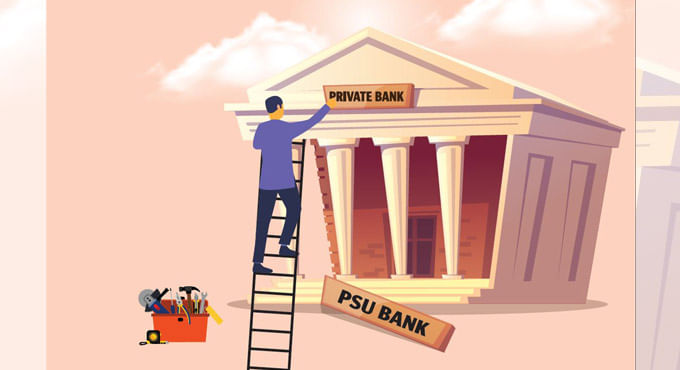
Context
- Recently, the Bank unions had done a nationwide strike against the proposed privatisation of public sector banks (PSBs).
About Banking Laws (Amendment) Bill, 2021
- The Bill aims to amend banking companies acquisition and transfer laws of 1970 and 1980 and the Banking Regulation Act, 1949 to achieve privatisation of two PSBs to meet disinvestment targets as stated by finance minister Nirmala Sitharaman in the Union Budget 2021-22.
- The Central Bank of India and Indian Overseas Bank can be 2 candidates for the bank privatization move.
- This will bring down the minimum government holding in the PSBs from 51% to 26%.
About Privatisation
- Transfer of ownership, property or business from the government to the Private sector.
- It is considered to bring more efficiency and objectivity to the company, something that a government company is not concerned about.
- Following the industrial policy of 1991, the government has adopted disinvestment, strategic sale of minority shares to private partners and selling of loss making units to the private sector.
Need for Privatisation
- Aggravated high Non-Performing Assets (NPAs) and stressed assets amidst pandemic.
- To strengthen the strong banks and also minimise their numbers through privatisation to reduce its burden of support.
- Less effective bank mergers & infuse better management policies.
- No political interference & prompt decision making.
- More profitability & accountability to shareholders.
- Improves inflow of Foreign Direct Investment (FDI) or investment. Recommended by Narasimham Committee (proposed 33% govt. stakes), P J Nayak Committee (<below 50%), RBI Working Group, etc.
- Better use of technology by private banks.
Arguments Against
- Performance Concerns (Lakshmi Vilas Bank’s operational issues, ICICI bank’s dubious loans sanctions, Yes Bank case etc.)
- This move will result in financial exclusion and promote crony capitalism.
- This will remove the sovereign guarantee behind the PSB deposits and make household savings less secure.
- Under Reporting of NPAs- 2015 Asset Quality Review by RBI.
- Concerns of successful disinvestment.
- Defeats goal of financial inclusion (failed Priority Lending Targets).
- Non-sharing of government’s social responsibilities (Violation of DPSP under Article 38).
- Privatisation will shrink employment opportunities for Scheduled Castes, Scheduled Tribes and Other Backward Classes (OBC) since the private sector does not follow reservation policies for the weaker sections.
FAQs on UPSC Daily Current Affairs- December 18, 2021
| 1. What are the three main categories or sections of the UPSC exam? |  |
| 2. What is the significance of UPSC Daily Current Affairs in the UPSC exam preparation? |  |
| 3. How can UPSC Daily Current Affairs be helpful in improving one's performance in the UPSC exam? |  |
| 4. Why is it important to answer Frequently Asked Questions (FAQs) related to the UPSC exam? |  |
| 5. How can one find the most relevant Frequently Asked Questions (FAQs) related to the UPSC exam? |  |














